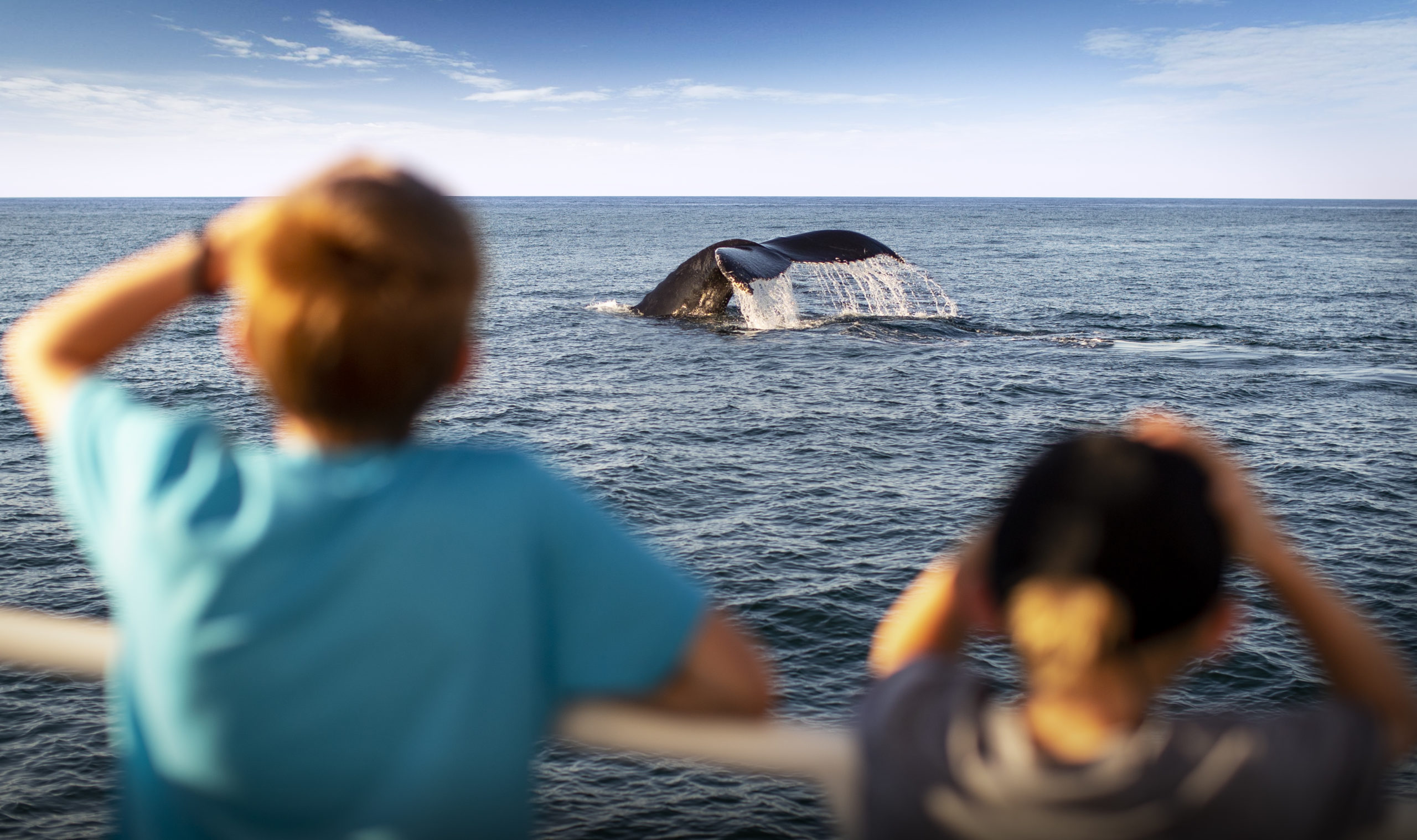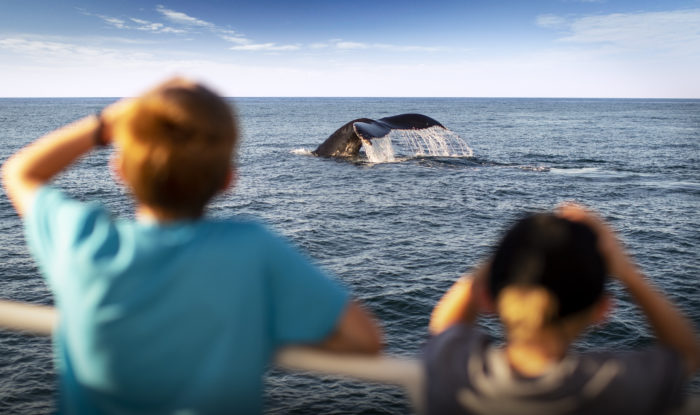
Sanctuary 30th Anniversary Series – Blog #12 “Finding sanctuary: Successes of the past 30 years” by Lisa Wooninck
Since designation of the Monterey Bay National Marine Sanctuary 30 years ago, much has happened to improve and enhance the sanctuary ecosystem. The National Marine Sanctuaries Act, a unique legislation passed in 1972, provides the guiding principles behind how national marine sanctuaries are managed and the secret to their success.
Ecosystems in their entirety
The National Marine Sanctuaries Act is the only federal authority that offers an ecosystem-based management approach that promotes human uses, such as recreation, tourism and commercial activities, compatible with marine conservation and protection of biodiversity.
This approach considers all species in an ecosystem, including humans, their uses, and the impacts each have on each other. Monterey Bay National Marine Sanctuary stimulates collaborative research, education, outreach, resource protection and stewardship to realize the potential of ecosystem-based management outlined in the act.
Coalition of the concerned and committed
Since the Monterey Bay National Marine Sanctuary designation in 1992, wildlife populations, biodiversity, and water quality have mainly, with some exceptions, continued to improve and thrive. Just as it took a coalition of environmental nonprofits, concerned citizens, and skilled political leaders to designate the sanctuary, it takes many dedicated volunteers, scientists, and effective partnerships to protect sanctuary resources, especially one as large as Monterey Bay National Marine Sanctuary (6,094 square miles), larger than the state of Connecticut.
Community counsel
One major success came early in the tenure of the sanctuary, in 1994, when the Monterey Bay National Marine Sanctuary Advisory Council was established. Sanctuary managers rely on strong community engagement, embodied by sanctuary advisory councils of representative local stakeholders to make recommendations on sanctuary designation and management. Local knowledge and expertise add credibility to decisions about the management of the sanctuary.
The Monterey Bay Advisory Council has member seats representing agriculture, business/industry, commercial and recreational fishing, diving, education, recreation, research, tourism, and seven government partners. The advisory council has played a vital role in important decisions affecting the sanctuary. We are grateful to the many advisory council members for their dedicated service and community engagement on behalf of the sanctuary.
Protecting productivity
The sanctuary protects one of the most biodiverse places in the world, driven by strong upwelling of cold, nutrient-rich deep water from the Monterey Canyon. Humpback whales from Mexico and Costa Rica, leatherback turtles from Indonesia, and the sooty shearwater from New Zealand migrate here to feast in sanctuary waters – known as the “Serengeti of the Sea.” When local scientists (e.g. Baldo Marinovic and Don Croll from UCSC) and conservation groups alerted us of the perils to the sanctuary productivity from a krill fishery, we sought to ban krill harvest preemptively before a local fishery could get started. Krill are small planktonic crustaceans and the main diet for many marine animals.
The advisory council petitioned federal fishery managers to use their authority and prohibit the harvest of krill to safeguard the productive food web and several fisheries. The fishery managers agreed with the wisdom of this recommendation, and in 2009 banned the harvest of krill not just within the sanctuary, but for all U.S west coast waters out to 200 nautical miles.
Watchable wildlife
While whales are no longer hunted because of the Marine Mammal Protection Act (also passed in 1972), they have become more valuable as a tourist draw. After the whaling ban, populations of many whale species rebounded, offering opportunities for eager tourists to connect with them in their natural habitat. Whale watching tours, following responsible wildlife viewing guidelines, offer an unforgettable experience and contribute billions of dollars to the U.S. economy.
Whale watching generates tourism dollars that trickle through the hospitality sector, creating thousands of jobs. Sanctuary managers and partners also collaborate to address and reduce some of the current threats to whales such as ship strikes, entanglements and sound. Thus safeguarding a healthy and resilient sanctuary ecosystem, also supports a healthy and vibrant economy.
Big blue bounty
The wildlife of Monterey Bay National Marine Sanctuary have also been the inspiration behind many engaging nature documentaries. Big Blue Live, a 2015 PBS/BBC reality television event celebrating the diversity of sanctuary wildlife: otters, whales, dolphins, sea lions, elephant seals, great white sharks, and shearwaters, all feeding on the available smorgasbord of marine forage.
The well-traveled BBC presenter M. Sanjayan says it well: “Almost any place I have ever been, all the world’s oceans are pretty much in worse shape today than they were in the past. [What] makes Monterey Bay so special, many of the animals that come here [were] nearly hunted to extinction [50 years ago]. Their recovery is a minor miracle and a conservation success story.”
Fast forward to April 2022 when Netflix debuted “Our Great National Parks,” a five- part series on the world’s national parks, narrated by President Barack Obama. The only U.S example featured is an entire episode on Monterey Bay National Marine Sanctuary. The episode hails our national marine sanctuary as a global example of effective marine conservation alongside humans and urban centers.
 Monterey Bay National Marine Sanctuary Superintendent Dr. Lisa Wooninck began as a research fishery biologist at NOAA Fisheries headquarters and the Santa Cruz lab, joined the sanctuary as a policy analyst, and then the West Coast Regional team in 2010 as the policy coordinator. She has a Ph.D. in ecology and evolutionary biology from UC Santa Barbara.
Monterey Bay National Marine Sanctuary Superintendent Dr. Lisa Wooninck began as a research fishery biologist at NOAA Fisheries headquarters and the Santa Cruz lab, joined the sanctuary as a policy analyst, and then the West Coast Regional team in 2010 as the policy coordinator. She has a Ph.D. in ecology and evolutionary biology from UC Santa Barbara.
About this series
Monterey Bay National Marine Sanctuary is celebrating its 30th anniversary, and the national sanctuary system its 50th anniversary. In recognition of these milestones, the Sentinel has been publishing columns by former U.S. Secretary of Defense Leon Panetta, former U.S. Rep. Sam Farr, former Save Our Shores Director Dan Haifley, and former California Assemblymember Fred Keeley, who serve on the board of Monterey Bay National Marine Sanctuary Foundation and were involved with the sanctuary’s designation, as well as Sanctuary Superintendent Dr. Lisa Wooninck. For information, visit montereybayfoundation.org or montereybay.noaa.gov.

